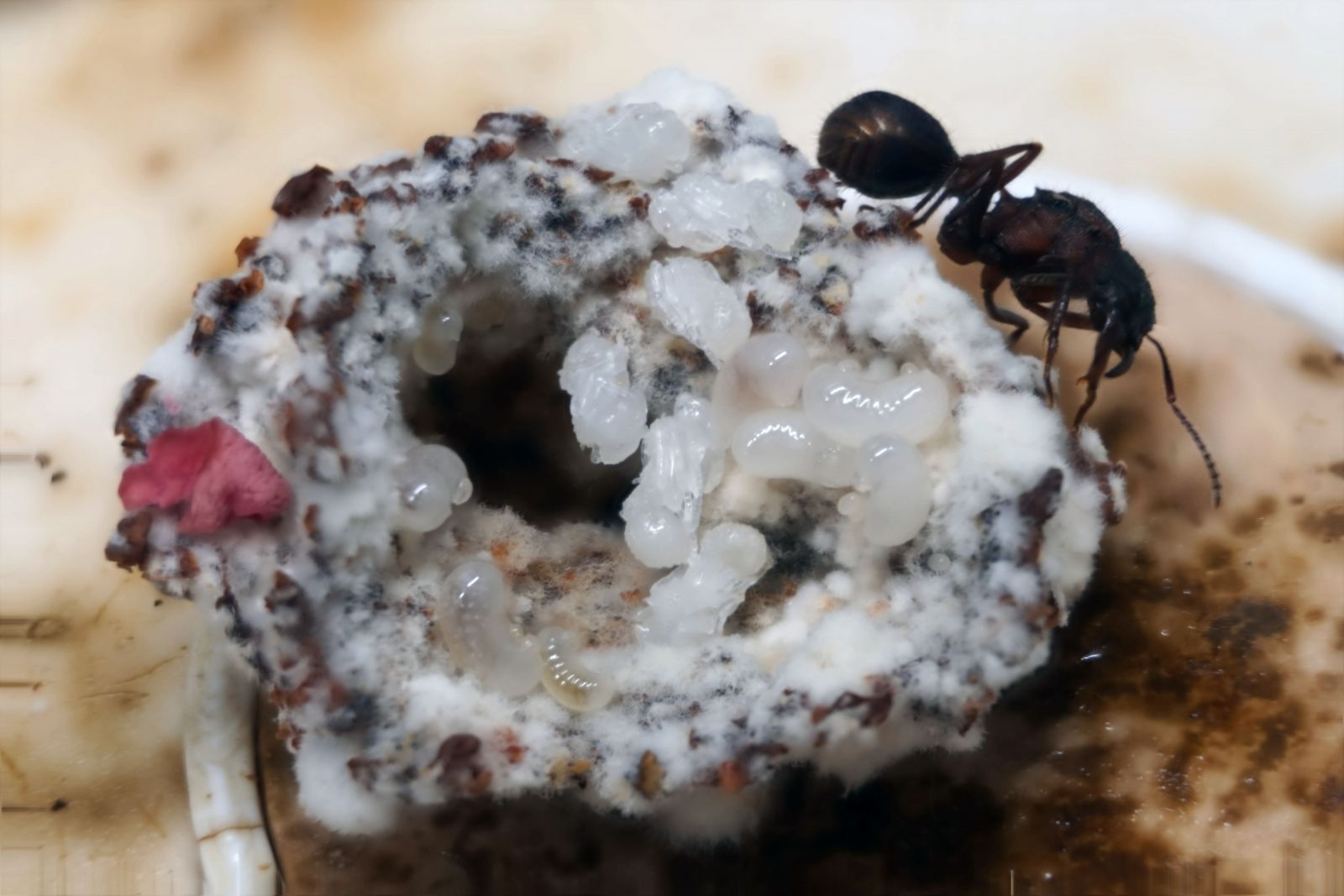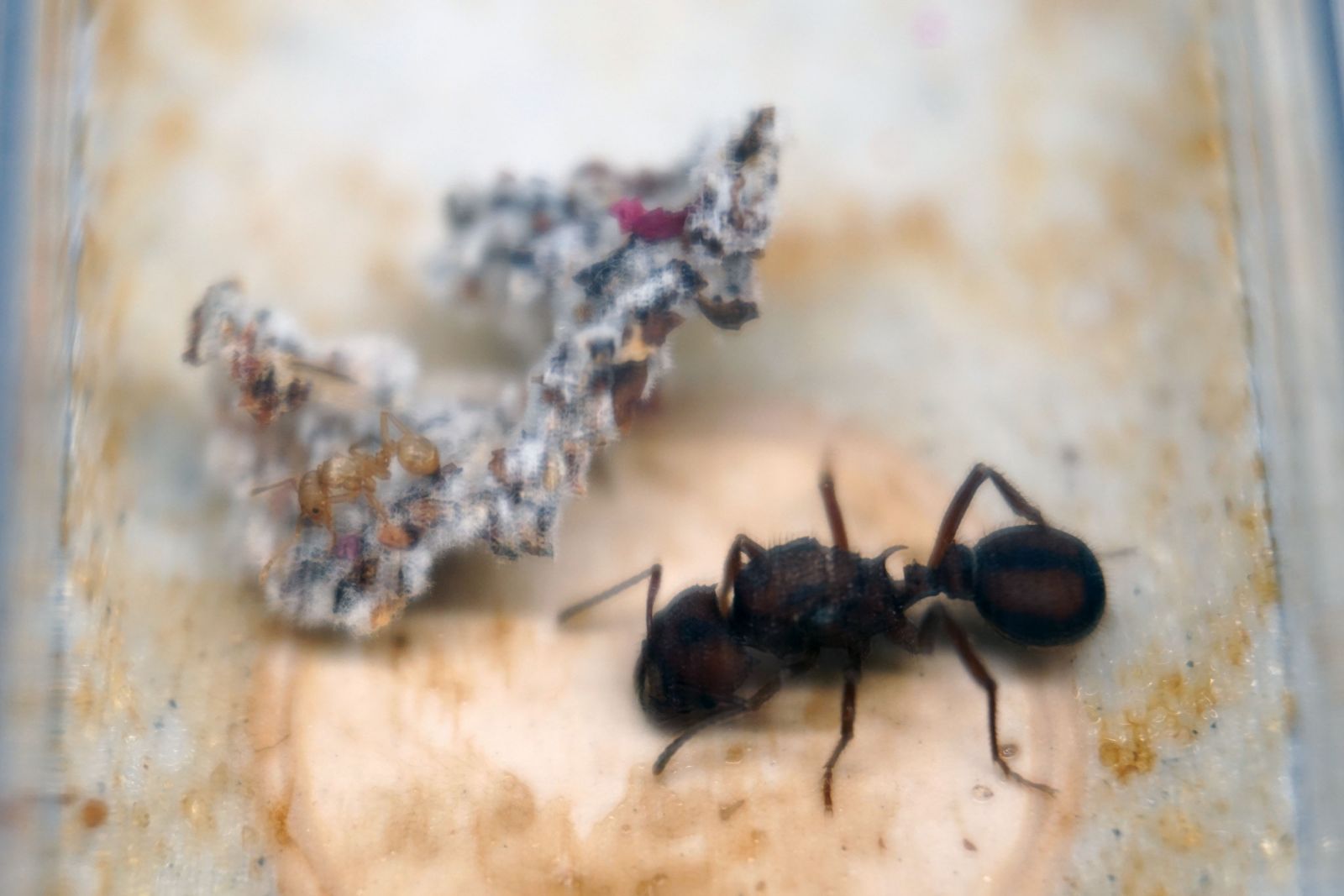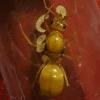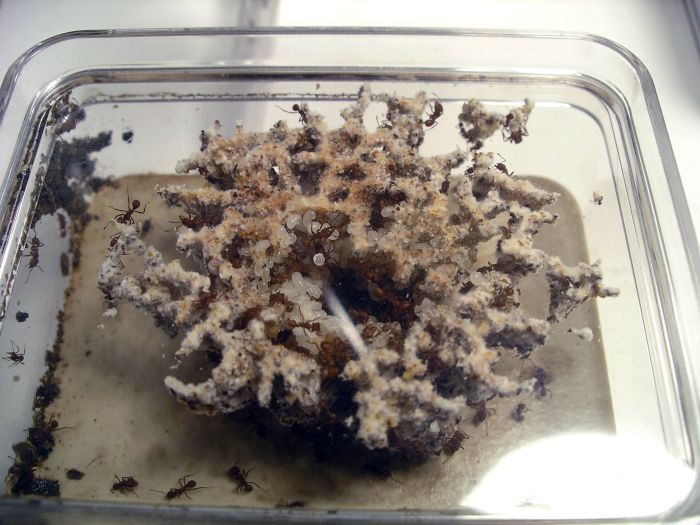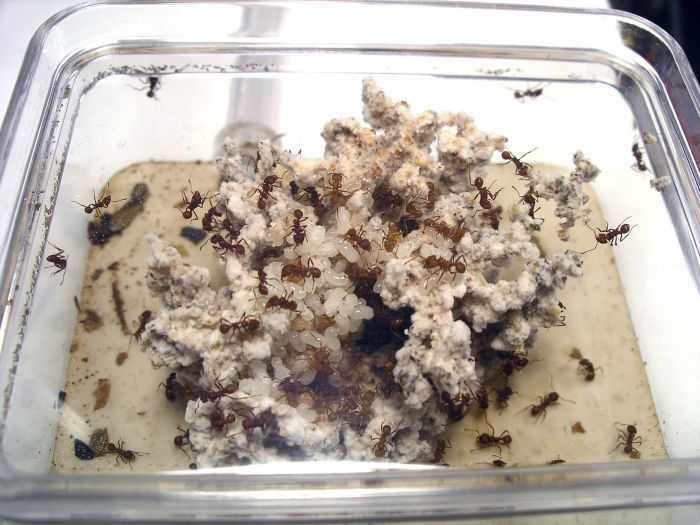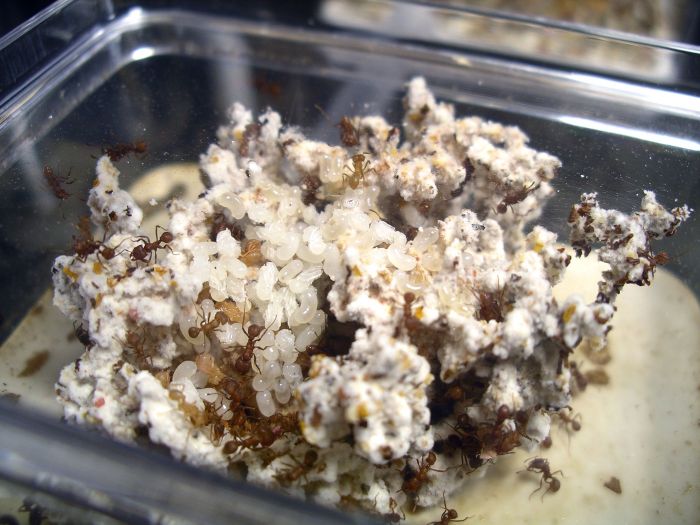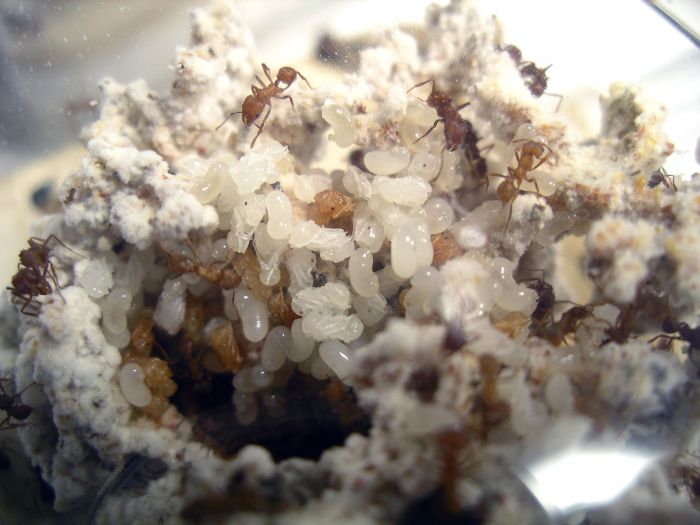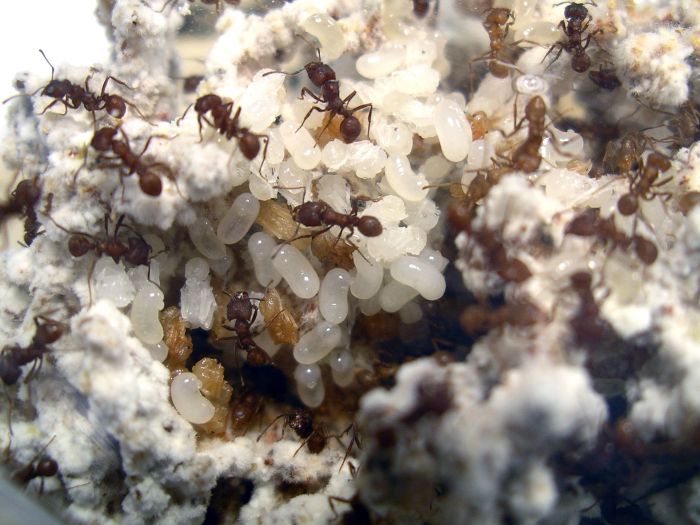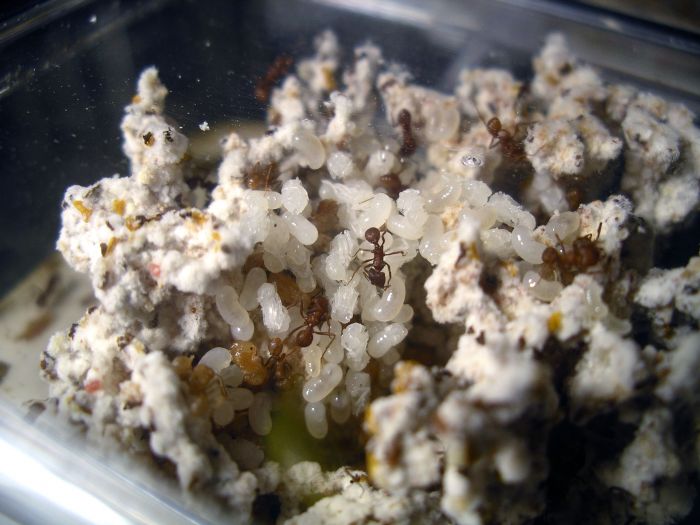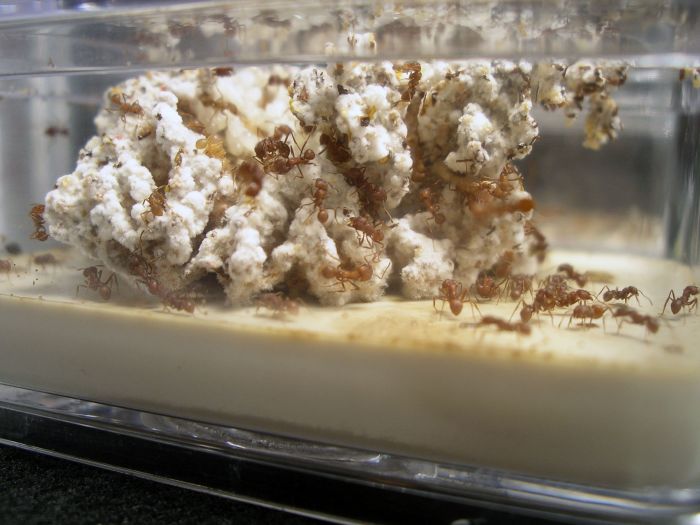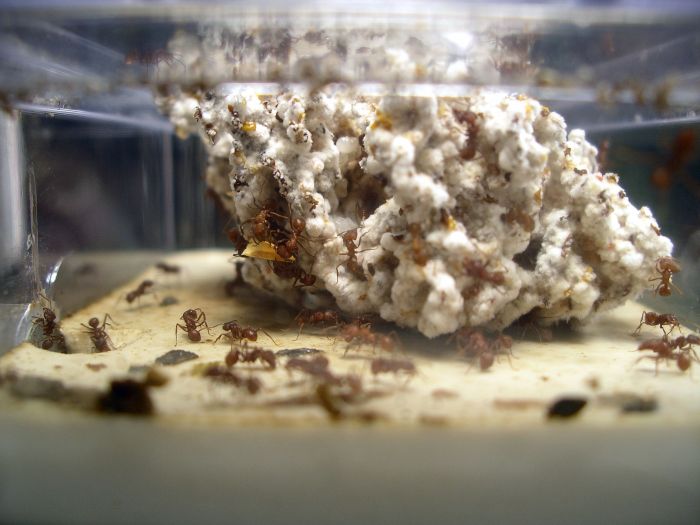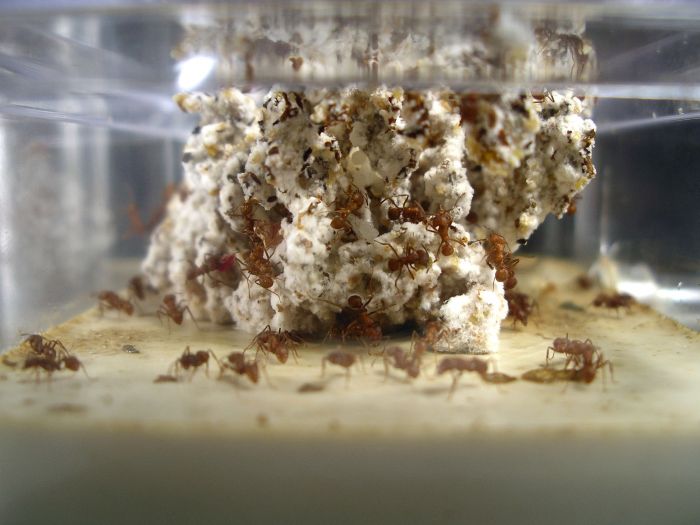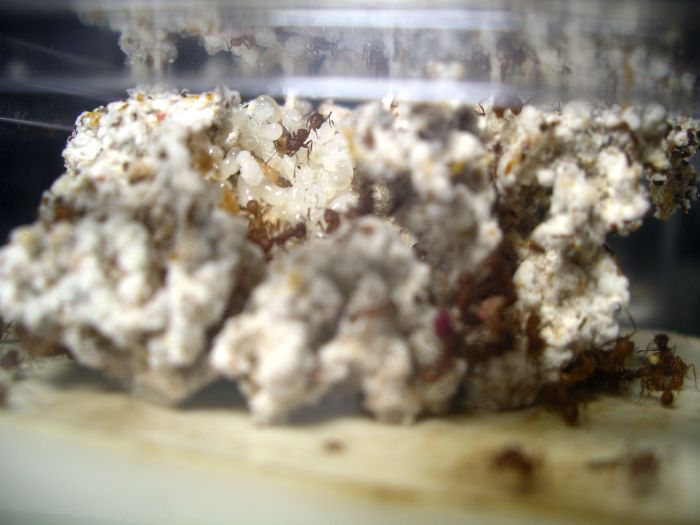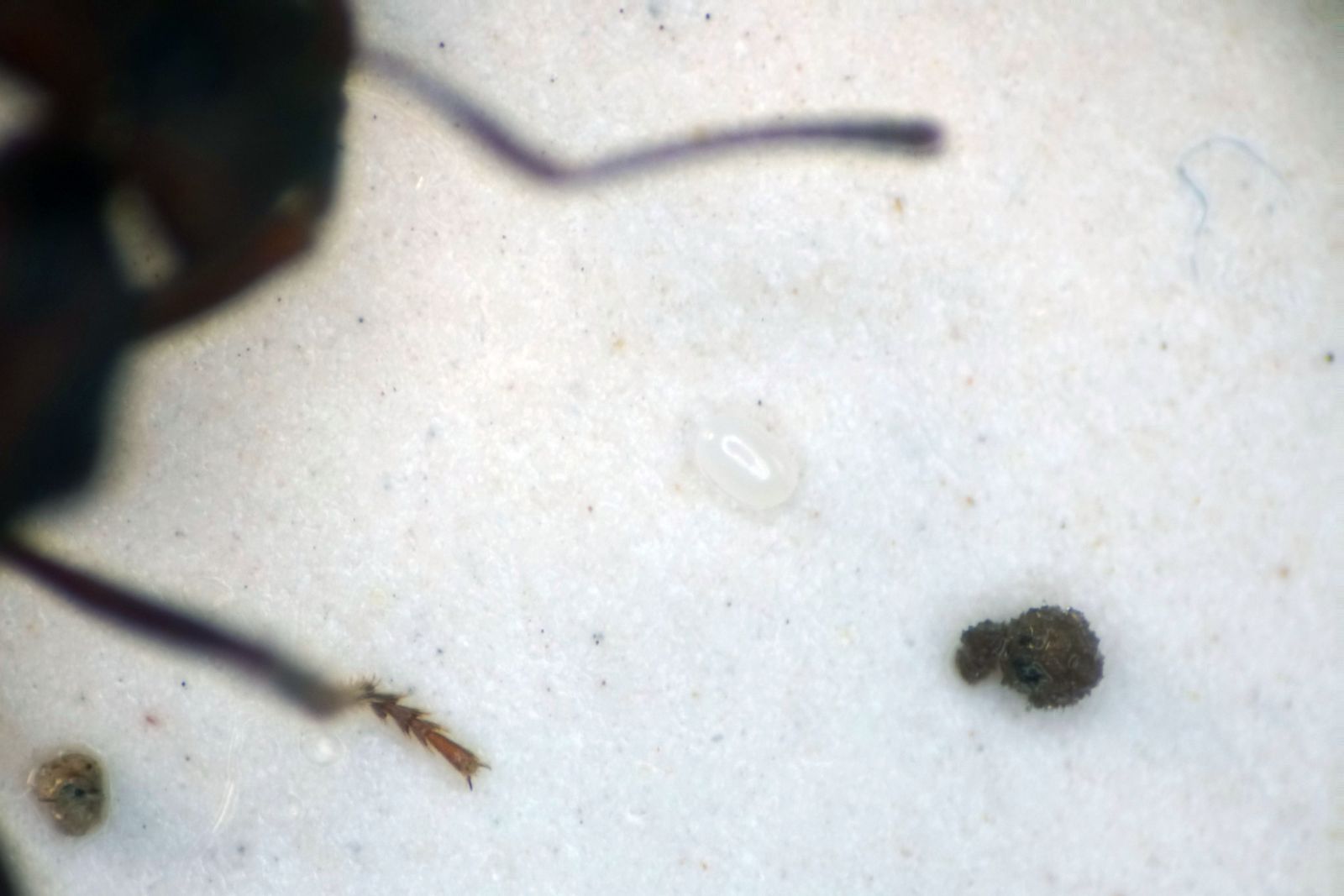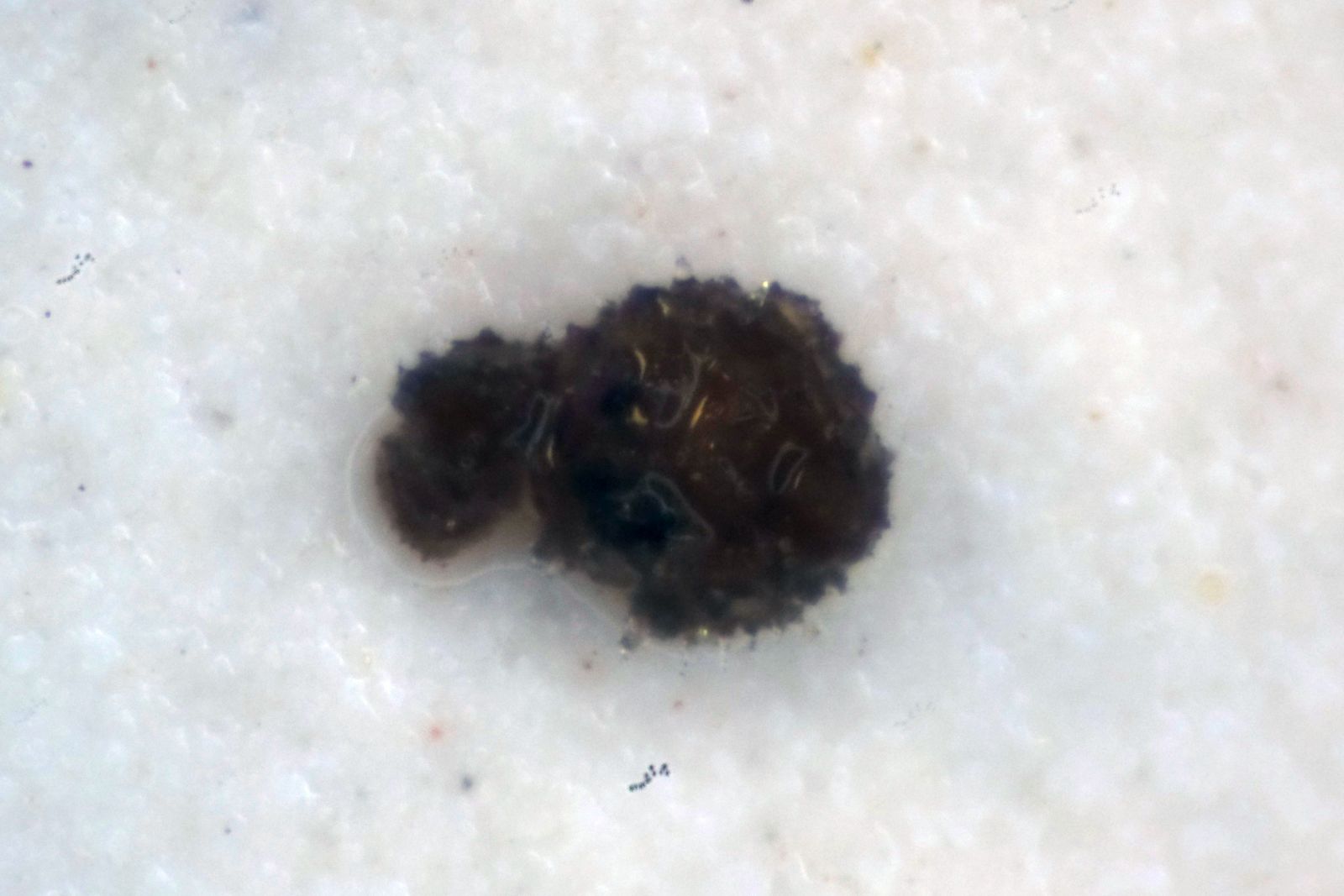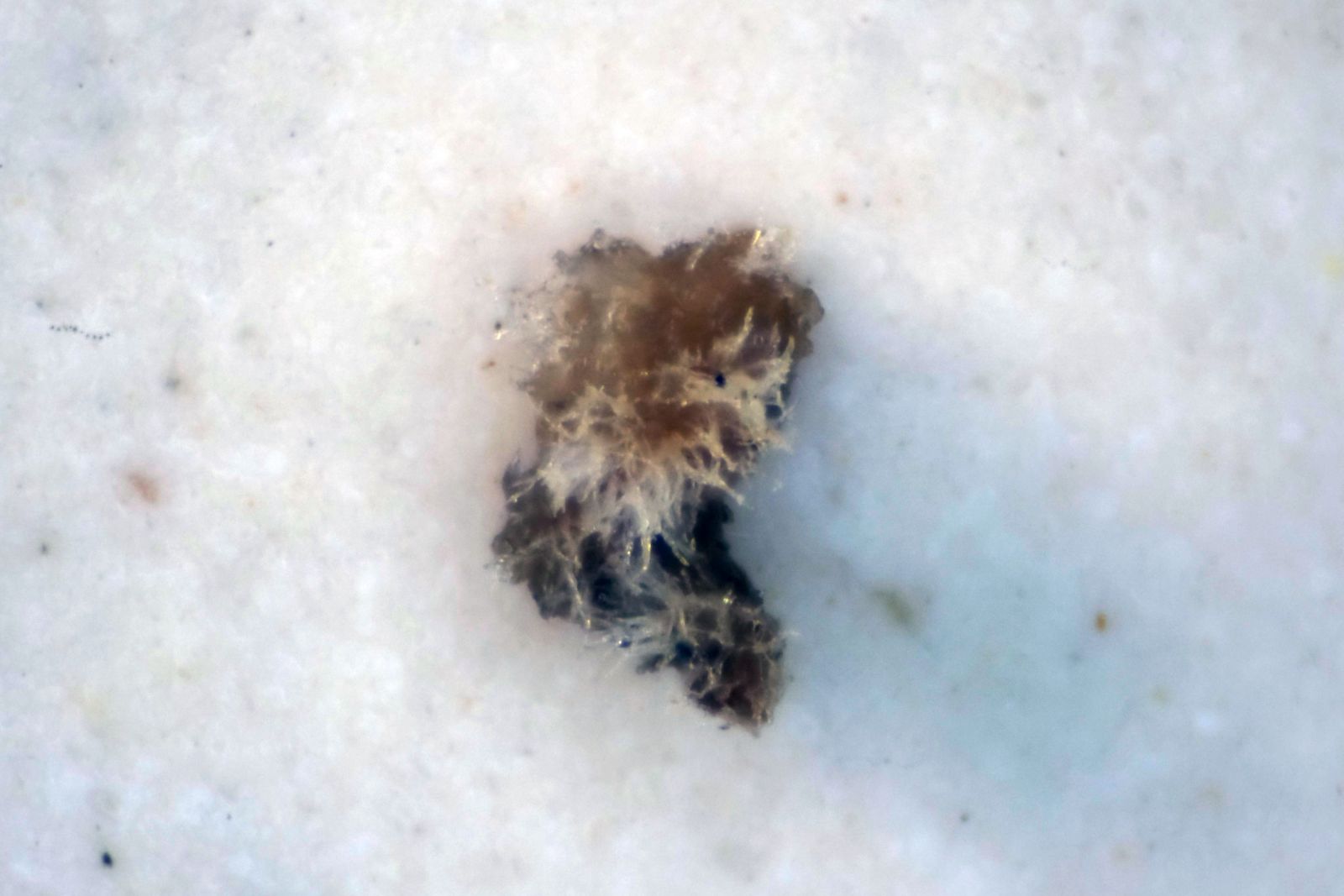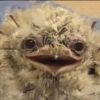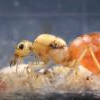Update 9-3-2018
The other day I found two dead queens out of the bunch, which is not too bad. For some reason after the reserve fungus got down to a pretty small size it suddenly looks healthier. I took a little more of it to give to a few queens whose fungus was completely dead or gone. I looked at a few of them under my microscope and saw they had a few eggs and one had a small larva. I know there is usually a lot more brood than you can easily see, because it's often hidden in the fungus. I set a few more queens up in formicariums. I don't want to use all the formicariums I have in case someone wants to buy one.
So far two of the fungus pieces that originally had the wild-caught workers added to them have died off. The other two (which I removed the workers from and gave to new queens) are doing well. One is relatively large so I'm surprised the queen is able to keep up with it, but she has plenty new substrate stuck all over it.
Today I checked and found one more dead queen, and two that let their fungus die, which I suspect were the same two from before. I gave them each a little more fungus and marked them this time. I usually swap them out when this happens, but I don't have any queens on reserve. If they let their fungus die again, I'm not giving them anymore. The queens will just go back in test tubes and be put in the reject pile for when the next queen dies... that is, if I don't just feel it would be more worth while giving the fungus back to the reserve fungus workers.
All in all, they are doing really well so far. Right now I have 25 queens in test tubes inside containers, and 34 in formicariums.




